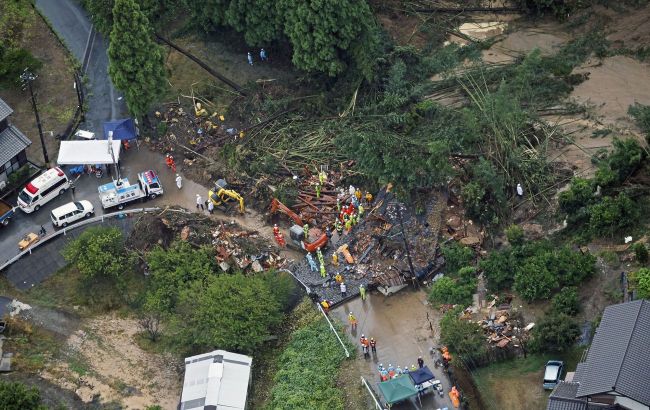Typhoon Bualoi hits Vietnam: One dead and twelve missing
 Illustrative photo: Typhoon Bualoi in Vietnam (Getty Images)
Illustrative photo: Typhoon Bualoi in Vietnam (Getty Images)
A powerful typhoon struck the north-central regions of Vietnam, resulting in widespread destruction, power outages, and casualties. Authorities issued warnings about an increased threat of floods and landslides, Reuters reports.
On the morning of Monday, September 29, the powerful Typhoon Bualoi struck central Vietnam, damaging houses and cutting off electricity in several settlements. According to preliminary reports, one person was killed and twelve fishermen are missing. The storm brought heavy rains and high waves.
According to the national weather forecast agency, at 08 a.m. local time (01:00 GMT), the cyclone was over Nghe An province. The maximum wind speed had decreased to 88 km/h compared to 117 km/h recorded a few hours earlier when it made landfall.
Consequences of cyclone
The meteorological service noted that even before making landfall, the typhoon had been moving along the coast for several hours, generating waves up to eight meters high. In the city of Hue, one person died after being swept away by floodwaters. In addition, state media reported that four fishing boats sank off the coast of Quang Tri province, leaving 12 fishermen missing.
Evacuations and transport disruptions
Ahead of the storm’s arrival, authorities evacuated more than 28,500 people. To ensure safety, four airports in central Vietnam were closed, leading to mass flight cancellations and delays.
Heavy rains had already hit much of Vietnam since Saturday. Authorities warn of a high risk of floods and landslides. According to the meteorological service, up to 500 millimeters of rainfall may hit some regions by Tuesday.
In the temporarily occupied territories of the Luhansk region, authorities are once again implementing methods reminiscent of Soviet-era coercion. Students are being forced to participate in the so-called Stakhanovite movement, which is being used as a cover for compulsory labor.
Since mid-September, residents of Melitopol have faced communication restrictions: mobile internet has been blocked, and access to popular online services has been severely limited.

